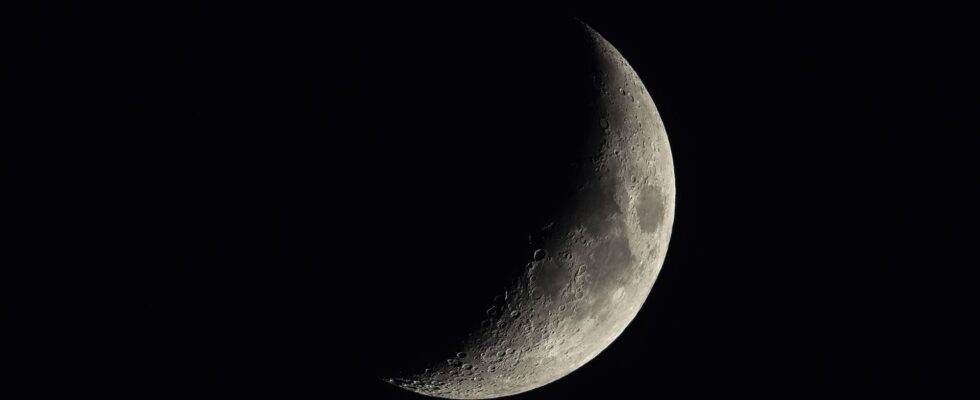A “black moon” would be announced for May 19, 2023. However, this expression means nothing in astronomy, and there will be nothing special to see.
A “black moon” would be announced for Friday, May 19, 2023. According to some media, we should expect to experience a rare astronomical event on this date. After the so-called “blood moon” or “super moon”, here is another enigmatic expression to designate our satellite. What does it mean? All the astronomers we were able to interview – from 2019 when another “black moon” was already announced – question this expression.
” The black moon is an expression that comes up regularly to fill in the news a little, which also seems to be used in astrology explains Eric Lagadec, assistant astronomer at the Lagrange Laboratory of the Côte d’Azur Observatory. Professional astronomers do not speak of a black moon. Moreover, the meaning of this expression is rather vague. ” When we are interested in it, we see that it would even refer to two different definitions: two new moons in the same calendar month, or a new moon which is also a ‘supermoon’ “, completes the specialist.
What is a New Moon?
Approximately every 29 days, the Moon completes a lunation. During this period, the star goes through different phases (new moon, first quarter, full moon, last quarter). These are landmarks: the Moon gradually changes its appearance. From Earth, we see the visible side of the satellite, lit differently by the Sun. When it is completely illuminated, it is called a full moon. On the contrary, when it is not illuminated (it is therefore invisible in the sky), we speak of a new moon.
There may well be two New Moons in a calendar month — but that is not the case in May 2023.” As the phases shift month after month, from time to time it is the full moon or the new moon which occurs twice, and there is a recent fashion to give nicknames to these phenomena which are not Really explains Sébastien Derriere, astronomer at the Strasbourg Observatory.
There is also no “supermoon”
The “super moon”, sometimes referred to in what would be the definition of the “black moon”, does not make more sense. ” Before 2014, we had never heard of it, and suddenly this expression appeared. So much the better, if it encourages us to look more at the sky. But many people present this ‘supermoon’ as something extraordinary, when it doesn’t really make sense, it’s just a little closer “, points out Eric Lagadec. When the Moon revolves around the Earth, the path of its movement draws an ellipse (and not a circle). While traversing this ellipse, the Moon is not always at the same distance from the Earth.
So don’t look for a “dark moon” on May 19, or any other day, because there won’t be one. On the other hand, there are many other things to know about the new moon. ” What is interesting, for example, is the phenomenon caused by the Moon, when it is close and new, on the tides. The tides are related to the action of the Sun and the Moon. When the Moon is new and closer, the tides are higher. sums up the astronomer from the Observatory of the Côte d’Azur.
Look instead at the thin crescent moon
If you really care about observing the Moon these days, there is a much more intriguing phenomenon to see than the so-called “black moon”. To hope to observe it, the Moon must not be fully illuminated, continues Eric Lagadec: “ The Moon is always more interesting to observe when it is not whole, because the raking light makes it possible to see its reliefs. Shortly before the new moon, looking at its thin crescent also allows you to see the earthshine. It is the light reflected by the Earth, on the face of the Moon which is not illuminated by the Sun. If we could see it from the Moon, we would see, in a way, an Earthlight. »
Do you want to know everything about the mobility of tomorrow, from electric cars to pedelecs? Subscribe now to our Watt Else newsletter!
